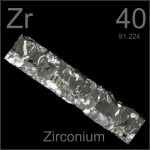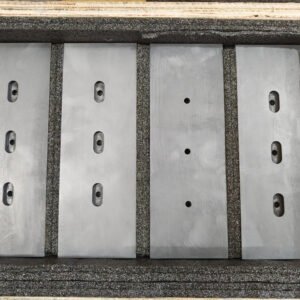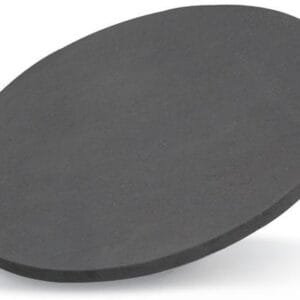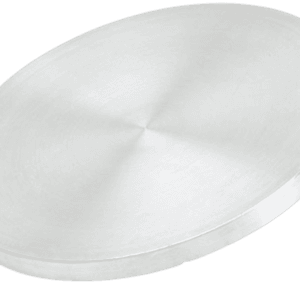Zirconium Carbide Sputtering Target Description
Zirconium carbide sputtering target from TFM is a high-quality carbide ceramic sputtering material with the chemical formula ZrC. Known for its high melting point, hardness, and good electrical conductivity, zirconium carbide is used in various advanced material applications, including thin film deposition processes for semiconductor and coating industries.
 Zirconium is a chemical element with the symbol “Zr,” derived from the Persian word ‘zargun,’ meaning gold-colored. It was first identified in 1789 by H. Klaproth, and its isolation was later achieved by J. Berzelius. Zirconium is located in Period 5, Group 4 of the periodic table, and belongs to the d-block elements. Its atomic number is 40, and the relative atomic mass is 91.224(2) Dalton, with the number in brackets indicating the uncertainty in the measurement. Zirconium is commonly used in various industrial applications due to its corrosion resistance and strong structural properties.
Zirconium is a chemical element with the symbol “Zr,” derived from the Persian word ‘zargun,’ meaning gold-colored. It was first identified in 1789 by H. Klaproth, and its isolation was later achieved by J. Berzelius. Zirconium is located in Period 5, Group 4 of the periodic table, and belongs to the d-block elements. Its atomic number is 40, and the relative atomic mass is 91.224(2) Dalton, with the number in brackets indicating the uncertainty in the measurement. Zirconium is commonly used in various industrial applications due to its corrosion resistance and strong structural properties.
Related Product: Zirconium Sputtering Target
Carbon, represented by the chemical symbol “C,” is an element named from the Latin word ‘carbo,’ meaning charcoal. It has been utilized since 3750 BC, with early uses attributed to the Egyptians and Sumerians. Carbon is a key element in the periodic table, positioned in Period 2 and Group 14, within the p-block. It has an atomic number of 6 and a relative atomic mass of 12.0107(8) Dalton, with the figure in brackets indicating the uncertainty in this measurement. Carbon is fundamental to life and is found in various forms, including graphite, diamond, and as a component of organic molecules.
Zirconium Carbide Sputtering Target Handling Notes
1. Indium bonding is recommended for zirconium carbide sputtering targets because of certain properties that make them less ideal for direct sputtering. Specifically, zirconium carbide exhibits brittleness and low thermal conductivity, which can complicate the sputtering process.
2. Due to its low thermal conductivity, zirconium carbide is susceptible to thermal shock. This characteristic makes careful handling and proper bonding techniques essential to ensure the stability and effectiveness of the sputtering target during use.
Zirconium Carbide Sputtering Target Packaging
Our zirconium carbide sputtering targets are meticulously tagged and labeled externally to ensure accurate identification and strict quality control. We take extensive measures to prevent any potential damage during storage and transportation, thereby preserving the integrity and performance of our products.
Get Contact
TFM offers Zirconium Carbide Sputtering Targets in various forms, purities, sizes, and prices. We specialize in high-purity thin film deposition materials with optimal density and minimal grain sizes, which are ideal for semiconductor, CVD, and PVD applications in display and optics. Contact Us for current pricing on sputtering targets and other deposition materials that are not listed.





Reviews
There are no reviews yet.